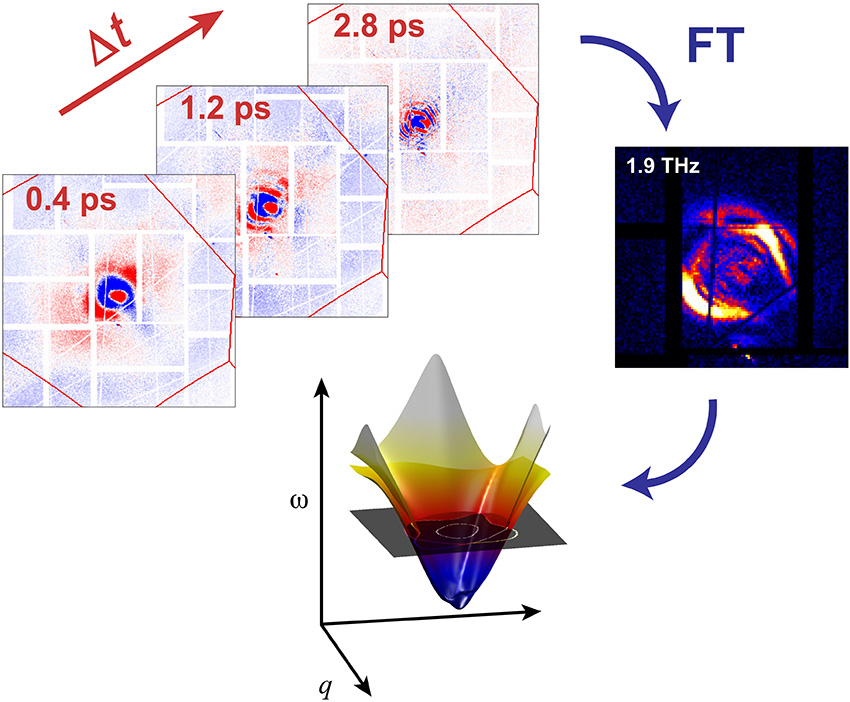X-ray Laser Used to Produce Movies of Atomic-scale Motion
Stroboscopic x-ray pulses scatter from a vibrating crystal and reveal how energy moves.

The Science
Atoms and the electrons that hold them together store energy in their electronic bonding structure and in their atomic vibrations. X-ray laser scattering techniques, which can record electron and atom motion at ultra-fast time scales, have been used to measure and track the transfer of energy from one atomic-scale storage mode to another.
The Impact
This x-ray scattering technique allows scientists to track the motion of atoms as they respond to sudden changes in their energy state. Tracking the mode of energy flow is critical to understanding the fundamental dynamics of energy conversion materials.
Summary
X-ray scattering can measure and describe the atomic positions in technologically important crystalline solids like silicon and germanium. After an excitation by heat or radiation, the flow of energy can be tracked as it moves through various storage modes; such as atomic spacing and bonding, atomic vibrations, and electron or magnetic ordering. The new technique uses advances in synchronized infra-red and x-ray laser pulses along with a large area position sensitive x-ray detector, to make x-ray scattering movies which track the response of the material from the moment of excitation. Infra-red light excites electrons and the x-rays measure the vibrational wave length and frequency where electron charge distortions couple strongly to changes in the atomic vibrations. Short lived transient states can be excited and measured and help determine how energy flows on atomic length scales. The time-domain measurements are a direct way to follow the excitations of solids and the flow of energy well away from their “home” positions and ground state.
Contact
David Reis
SLAC National Accelerator Laboratory
dreis@slac.stanford.edu
Funding
Department of Energy, Office of Science, Basic Energy Sciences program, for both the research and the use of the Linac Coherent Light Source user facility at SLAC.
Publications
M. Trigo et al., “Fourier-transform inelastic X-ray scattering from time- and momentum-dependent phonon–phonon correlations.” Nature Physics 9, 790 (2013).
Related Links
Movies of the raw and filtered data are available with open access in the Supplementary Information at the publication web site.
Highlight Categories
Performer: DOE Laboratory , SC User Facilities , BES User Facilities , LCLS



